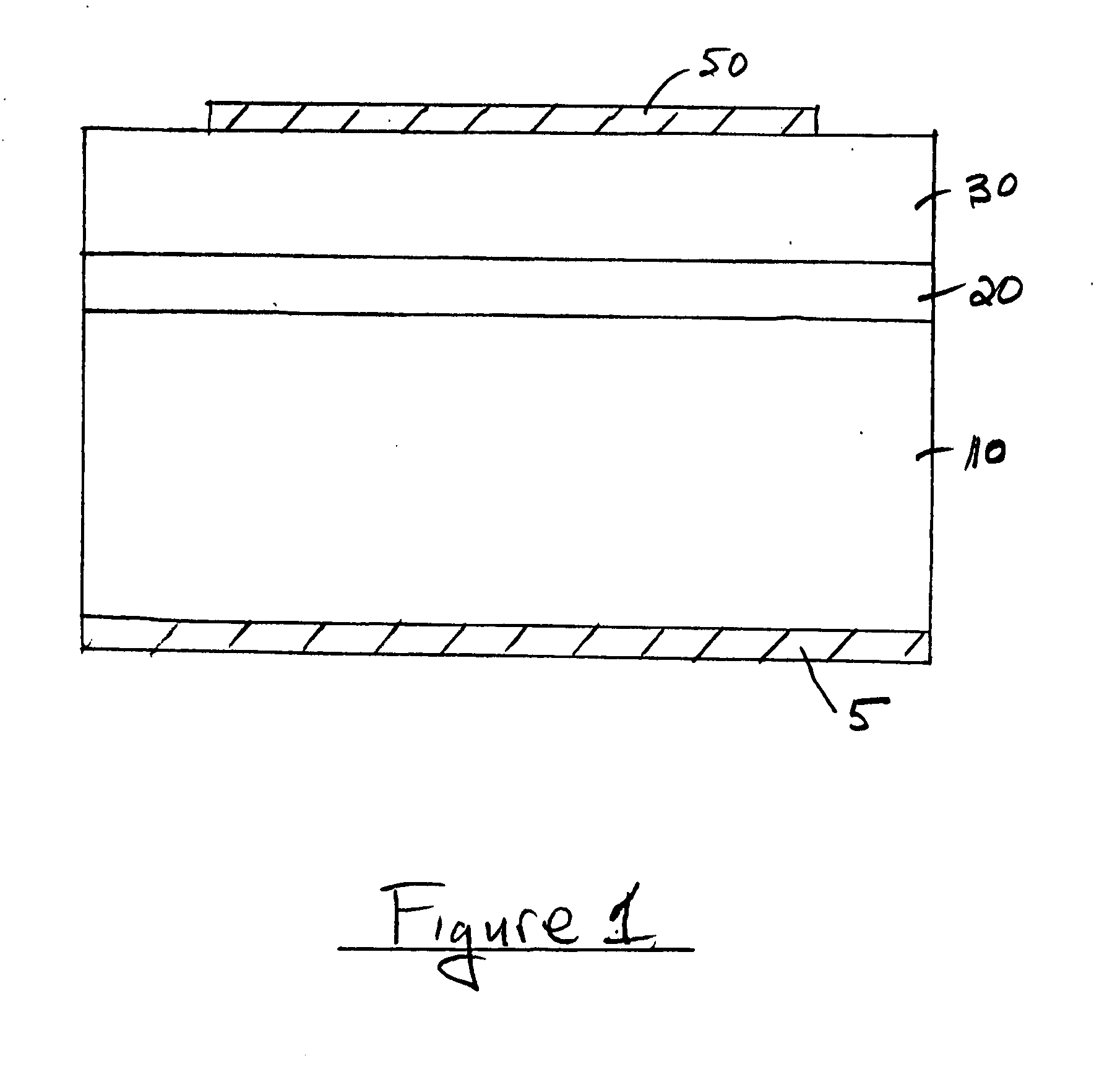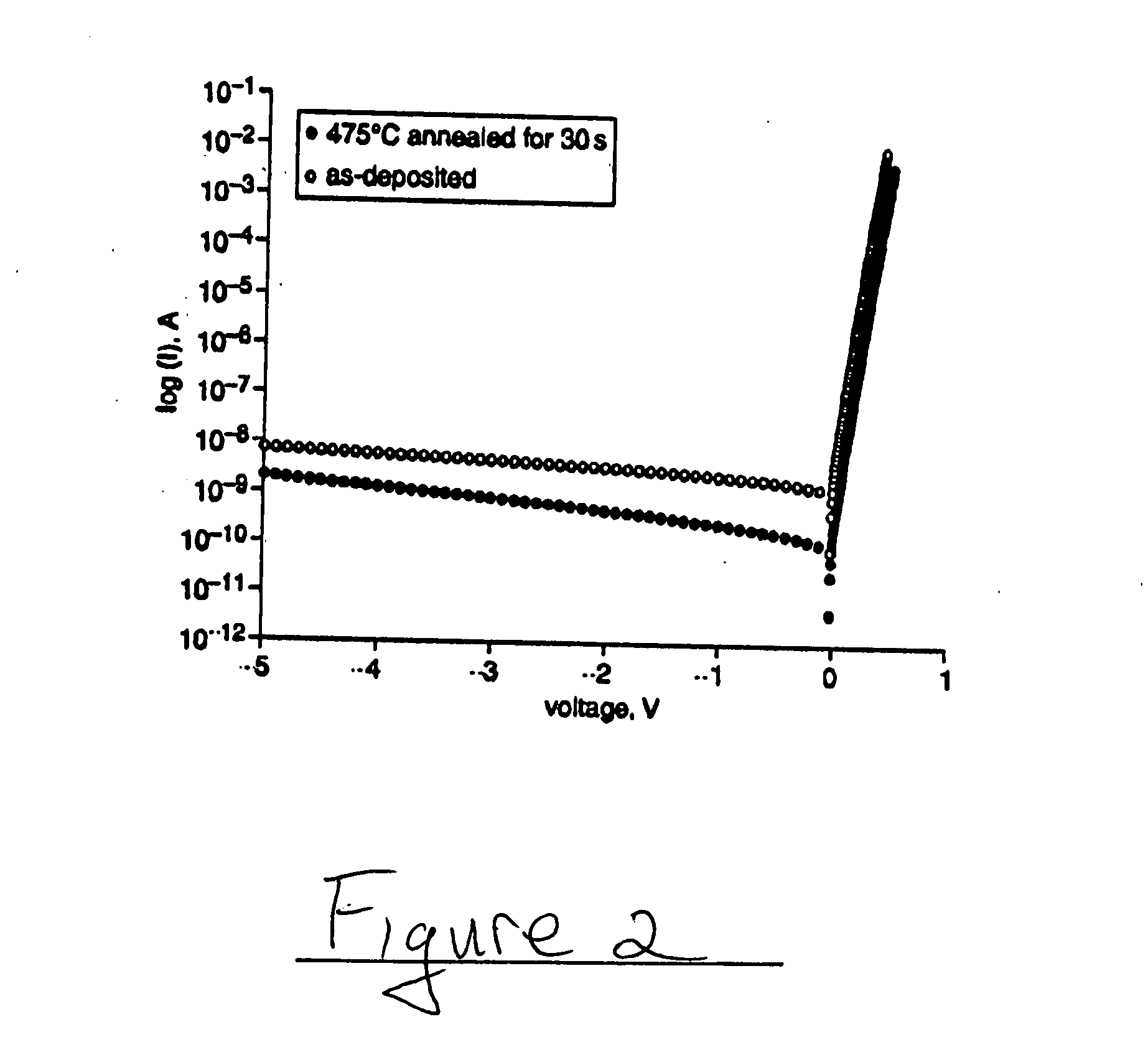Schottky gate metallization for semiconductor devices
a technology of semiconductor devices and gate metallization, which is applied in the direction of semiconductor devices, electrical equipment, transistors, etc., can solve the problems of reducing the effective gate-to-channel layer distance, posing a potential threat to the reliable performance of the device, and e-hemts exhibiting high performance and thermal stability
- Summary
- Abstract
- Description
- Claims
- Application Information
AI Technical Summary
Benefits of technology
Problems solved by technology
Method used
Image
Examples
Embodiment Construction
[0027] The layer structure used to fabricate Schottky diodes (see FIG. 1) for an example hereof was grown by molecular beam epitaxy (MBE) on an n+ InP substrate 10. From the bottom up, the structure included a 0.1 μm thick n+ (1×1018 cm−3) InAlAs buffer layer 20 followed by a 0.9 μm-thick, lightly doped InAlAs (n=1×1016 cm−3) layer 30. AuGe / Ni / Au ohmic contact 5 was formed on the backside of the InP by e-beam evaporation and alloying at 370° C. for 60 s in a furnace. 250 μm diameter, circular-shaped Schottky contacts (represented at 50) were fabricated by photolithography, e-beam evaporation and lift-off. Samples were rinsed in HCl:DI=1:2 solution to remove native oxide before metallization. Samples with 15 nm-thick Ir and Pt contacts were fabricated. Some of these samples were thermally treated at various temperatures ranging from 150 to 500° C. for 30 s in nitrogen ambient in a rapid thermal anneal system. DC I-V-T measurements were performed on the samples on a variable temperatu...
PUM
 Login to View More
Login to View More Abstract
Description
Claims
Application Information
 Login to View More
Login to View More - R&D
- Intellectual Property
- Life Sciences
- Materials
- Tech Scout
- Unparalleled Data Quality
- Higher Quality Content
- 60% Fewer Hallucinations
Browse by: Latest US Patents, China's latest patents, Technical Efficacy Thesaurus, Application Domain, Technology Topic, Popular Technical Reports.
© 2025 PatSnap. All rights reserved.Legal|Privacy policy|Modern Slavery Act Transparency Statement|Sitemap|About US| Contact US: help@patsnap.com



